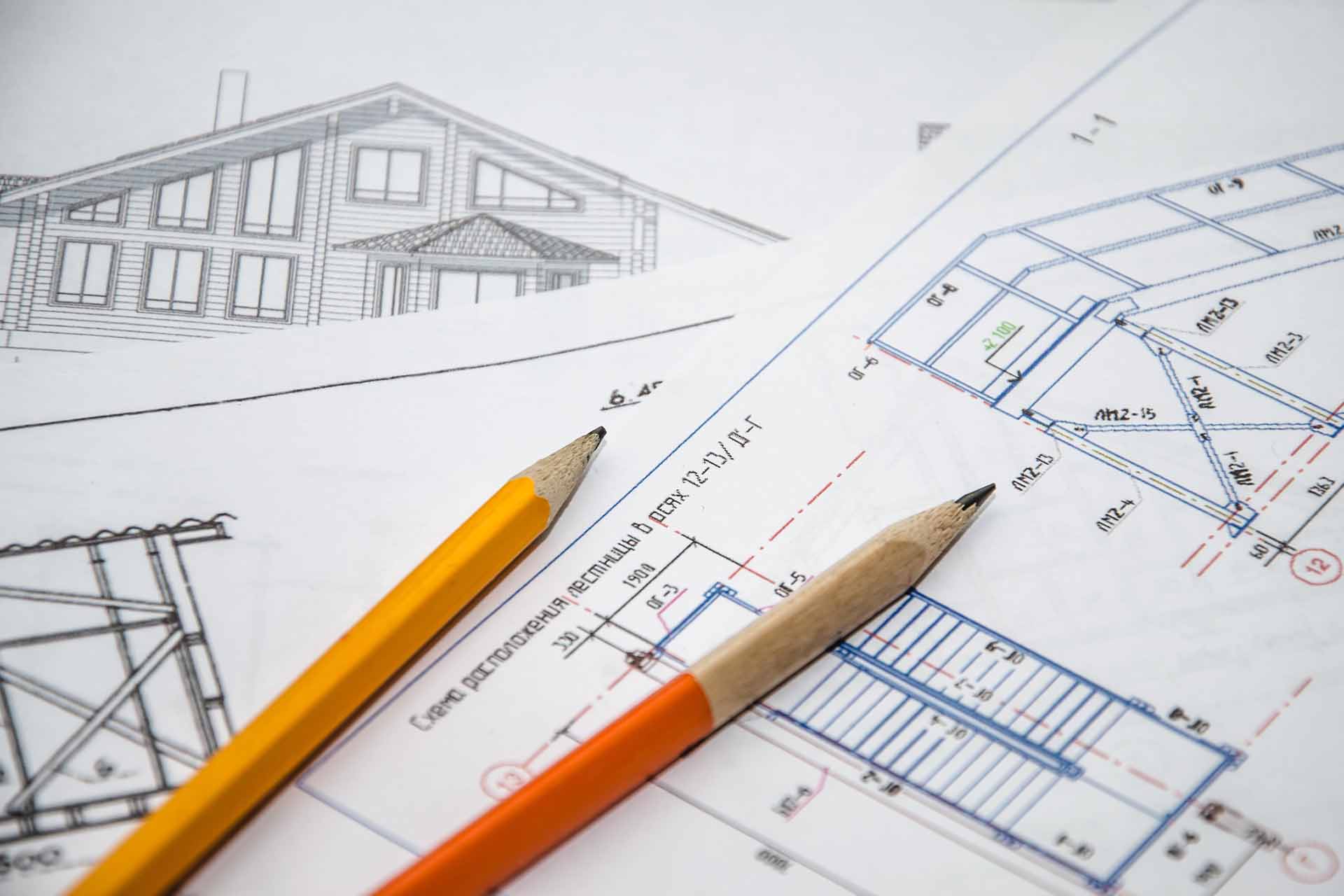Architect Interview Questions You Should Be Ready to Answer
Architect Interview Questions You Should Be Ready to Answer
Blog Article
Comprehending the Diverse Profession Paths Available for Aspiring Architect
As an aspiring Architect, you have a world of career courses waiting on you. Each path provides distinct obstacles and chances to use your creativity and technical knowledge. Whether you're attracted to standard design or the nuances of lasting layout, there's a specific niche that aligns with your passions. Understanding these diverse options can shape your specialist trip, however which direction will you select to discover first?
Traditional Design: Creating Structures and Structures
Conventional design concentrates on making buildings and structures that blend capability with visual allure. As you explore this area, you'll value the elaborate equilibrium in between form and objective. You'll find out to attract ideas from historical designs, incorporating elements like symmetry, materials, and craftsmanship. Your styles can mirror cultural heritage, showcasing regional traditions while fulfilling modern-day demands.
You'll establish skills in composing, model-making, and website evaluation, enabling you to envision and communicate your concepts efficiently. Involving with customers, you'll need to comprehend their vision and convert it right into practical styles.
Additionally, developing codes and sustainability practices are essential in your job, guaranteeing your frameworks are environmentally pleasant and risk-free. As you grow in your profession, you'll discover possibilities in domestic, business, and even restoration projects, each offering distinct obstacles. Accepting conventional style paves the method for a satisfying career that admires the past while forming the future.
Urban Preparation: Forming Communities and Public Spaces
As an ambitious Architect, you can play an important duty as an urban coordinator, transforming how communities connect and operate. By employing neighborhood interaction techniques, you'll ensure that citizens have a voice fit their setting. And also, integrating lasting design concepts will assist develop rooms that not only fulfill today's requirements however also safeguard the future.
Role of Urban Planners
While many may think about architects as the sole dreamers behind structures, urban organizers play an important function in shaping the broader landscape of neighborhoods and public areas. They assess land usage, zoning legislations, and community requires to develop lasting atmospheres that boost top quality of life. By collaborating with numerous stakeholders, you'll assist design parks, transport systems, and suburbs that advertise social communication and availability. Urban planners also focus on ecological considerations, ensuring that developments integrate eco-friendly spaces and assistance biodiversity. Your expertise in spatial style and neighborhood characteristics permits you to imagine future growth while preserving social heritage. In this critical role, you'll straight influence how individuals experience their surroundings, making every project a possibility for favorable modification.
Area Engagement Techniques
Efficient neighborhood engagement strategies are crucial for urban planners to assure that the voices of citizens are listened to and valued in the preparation procedure. To foster purposeful discussion, you ought to focus on open forums and workshops where neighborhood participants can share their concepts and problems. Use studies and social networks to reach a wider audience, making sure varied viewpoints are consisted of. Working together with regional organizations can improve depend on and promote much deeper links. It's essential to give clear information regarding suggested projects and decision-making processes, permitting residents to really feel educated and equipped. By proactively paying attention and including responses, you'll create areas that mirror the area's requirements, ultimately causing even more successful and sustainable metropolitan atmospheres. Welcome openness and constant dialogue for enduring effect.
Sustainable Layout Principles
When developing urban rooms, incorporating sustainable layout principles is important for creating settings that thrive both environmentally and socially. Take into consideration integrating green rooms, like parks and yards, to enhance biodiversity and boost air top quality.
Creating with water conservation in mind is likewise essential-- believe about rainfall gardens and absorptive surfaces to take care of stormwater. Entailing neighborhood participants throughout the preparation process warranties that the spaces you develop satisfy their needs and encourage social communication. By welcoming these concepts, you'll add to dynamic, sustainable urban landscapes that profit every person.

Landscape Design: Creating Sustainable Exterior Environments
As you check out landscape architecture, you'll discover important design principles that develop functional and attractive exterior rooms. Sustainable practices play an important function in guaranteeing these environments grow while decreasing ecological influence. And also, you'll discover a variety of profession possibilities that enable you to make a genuine difference in exactly how individuals connect with nature.
Style Concepts in Landscape
Understanding layout concepts in landscape style is necessary for developing lasting outside atmospheres that balance with nature. You'll require to ponder components like proportion, scale, and balance to guarantee your styles feel natural and inviting. Including native plants not just improves biodiversity but additionally decreases water usage, making your landscape durable. Think of the circulation of space and exactly how individuals connect with it; paths and seating locations ought to invite expedition and relaxation. In addition, pay interest to seasonal adjustments, developing with products that website complement the surroundings year-round (Architect). By focusing on sustainability and aesthetics, you can develop exterior spaces that improve the community and advertise health. Accepting these principles will set a solid structure for your occupation in landscape design.
Lasting Practices Overview
Lasting methods in landscape style not just focus on appearances yet likewise prioritize eco-friendly wellness and source preservation. You can make rooms that advertise soil health, such as utilizing natural products and exercising permaculture concepts. Eventually, these practices guarantee your styles profit both individuals and the atmosphere for years to come.
Occupation Opportunities Expedition
With a strong structure in lasting practices, landscape architecture supplies a variety of profession paths that permit you to make a significant impact on the setting. Urban planners frequently work together with landscape architects to develop environment-friendly rooms in metropolitan settings, boosting city livability. If you're enthusiastic regarding education and learning, take into consideration becoming a landscape design instructor, motivating future generations.
Lasting Layout: Concentrating On Eco-Friendly Practices
As you explore your profession in style, accepting environment-friendly practices can set you apart in a competitive field. Sustainable layout concentrates on developing buildings that lessen environmental impact while boosting resident health. By integrating renewable products, energy-efficient systems, and sustainable structure methods, you'll add to a greener future.
Start by getting knowledge of green certifications like LEED or BREEAM, which can reinforce your credentials. Think about exactly how natural light, ventilation, and thermal effectiveness can maximize layout. Collaborate with engineers and ecological experts to innovate options that decrease waste and save resources.
Do not forget the importance of community participation-- engaging neighborhood stakeholders can motivate layouts that balance with the atmosphere. As customers significantly prioritize sustainability, your proficiency in eco-friendly methods will not just draw in tasks however also accomplish your passion for accountable design. Welcome this important facet of the occupation, and watch your career grow.
Historical Conservation: Securing and Restoring Cultural Heritage
While you commence on your building journey, take into consideration the vital duty of historic preservation in maintaining our cultural heritage. This area concentrates on the protection and remediation of considerable structures, websites, and frameworks that inform the stories of our past. By taking part in historic conservation, you'll help protect the building tradition that shapes area identification.
As a historic conservation Architect, you'll evaluate historical importance and analyze the problem of frameworks. You'll work very closely with chroniclers and preservationists to guarantee genuine reconstruction techniques are utilized. This career course allows you to blend creative thinking with research study, allowing you to create solutions that appreciate initial materials and workmanship.
Your job not just adds to sustainability by reusing existing buildings but additionally cultivates a sense of satisfaction within communities. Welcoming this course will assist you become a guardian of background, maintaining the stories and visual appeals that improve our lives.
Inside Design: Enhancing Indoor Spaces
Historical preservation and indoor style both share a dedication to enhancing the developed setting, but they focus on various facets. While historical preservation highlights preserving a structure's social and historical worth, indoor design absolutely nos in on optimizing interior areas for performance and visual appeals.
As an ambitious Architect, you'll locate that indoor architecture permits you to blend imagination with technological skills. You'll develop areas that not just look excellent but also advertise comfort click here and performance. This field includes comprehending how light, shade, and materials connect within a space, impacting mood and use.
You'll work on different projects, from property homes to business offices, making sure that each setting meets the needs of its passengers. By focusing on customer experience, you can change interiors into useful and motivating spaces, making a substantial effect on how individuals interact with their surroundings. Welcome the possibility to boost indoor environments and form more info the means people work and live.
Industrial Style: Combining Capability With Aesthetics
Commercial style plays a crucial role in developing items that flawlessly blend aesthetic appeals with performance, making sure that what you utilize daily is not just visually appealing yet also useful. As an aspiring Architect, you might immerse on your own in this field, concentrating on creating every little thing from furniture to customer electronic devices. Your work entails recognizing individual requirements, materials, and manufacturing processes, enabling you to develop innovative remedies that enhance daily experiences.
In industrial layout, you'll often collaborate with designers, marketers, and makers, ensuring that your layouts are not only gorgeous however additionally viable. This occupation course supplies a dynamic environment where creativity fulfills functionality, making it a satisfying choice for architects interested in shaping the products of tomorrow.
Regularly Asked Inquiries
What Educational Certifications Do I Need to Become a Designer?
To end up being an engineer, you'll need a specialist level in style, commonly a Bachelor's or Master's. Additionally, you'll need to finish an internship and pass the Architect Enrollment Exam to practice lawfully.
Exist Qualification Requirements for Different Architectural Job Paths?
Yes, there're qualification requirements for different building courses. Architect. You'll require to pass tests, full internships, and occasionally pursue specialized training, relying on your chosen emphasis, like landscape design, urban layout, or historic preservation
What Software Application Abilities Are Essential for Architects Today?

How Can I Gain Practical Experience While Studying Architecture?
You can obtain functional experience by interning at building companies, taking part in layout competitions, volunteering for neighborhood projects, or working together with schoolmates on real-world assignments. These opportunities enhance your abilities and construct beneficial connections in the sector.
What Task Opportunities Exist Outdoors Standard Architecture Firms?
You can explore various job possibilities outside typical architecture companies, like metropolitan planning, interior decoration, landscape design, building and construction management, property development, and even roles in sustainability consulting. Each deals one-of-a-kind challenges and benefits.
Whether you're drawn to typical style or the subtleties of lasting style, there's a particular niche that straightens with your interests.When creating city areas, incorporating sustainable style concepts is important for developing environments that flourish both environmentally and socially.As you discover landscape style, you'll discover crucial design concepts that create practical and stunning exterior rooms.Comprehending design concepts in landscape design is vital for producing lasting exterior atmospheres that balance with nature.In industrial design, you'll commonly collaborate with marketing professionals, producers, and engineers, making sure that your designs are not only beautiful but additionally possible.
Report this page